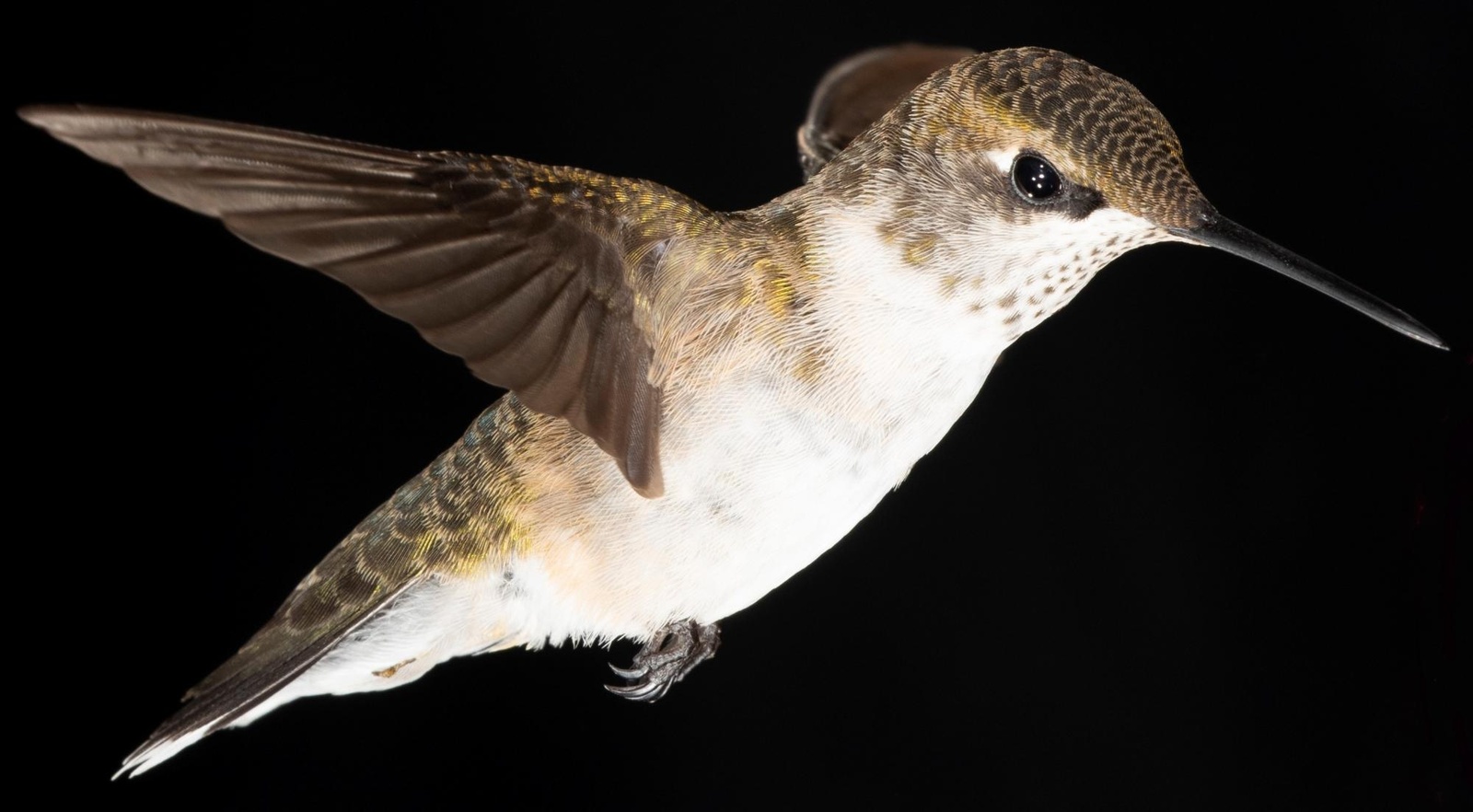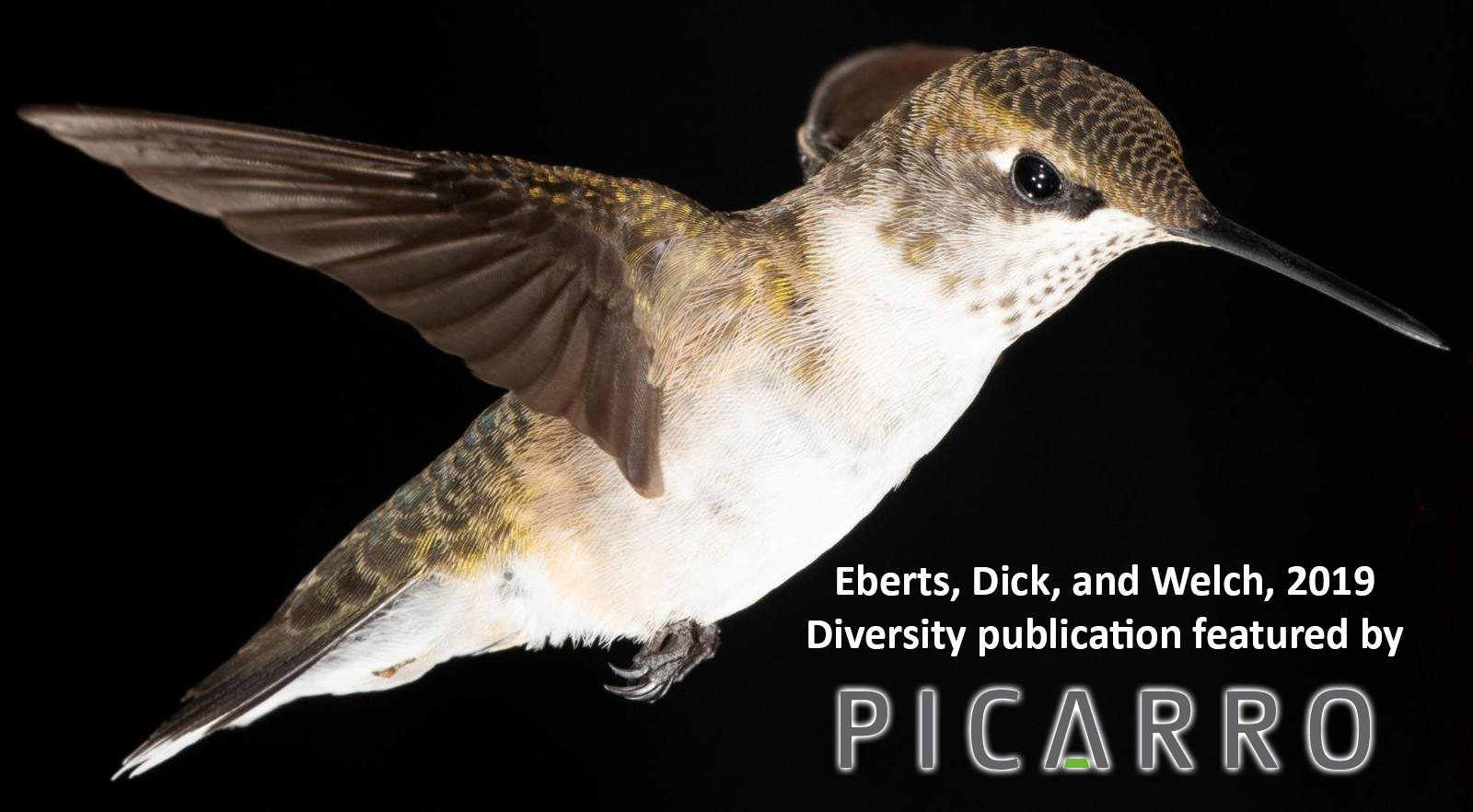The following highlighted post features our paper “Metabolic fates of evening crop-stored sugar in ruby-throated hummingbirds (Archilochus colubris)”
Read this post in its entirety here.

https://www.picarro.com/using_stable_carbon_isotopes_to_track_and_quantify_metabolic_fates_of_evening_meals_in_hummingbirds
At Picarro, we enjoy seeing how research groups at the forefront of Science are using our systems in their research. We’d like to thank Erich R. Eberts, Dr. Morag F. Dick, and the entire team at the lab of Dr. Ken Welch (Department of Biological Sciences, University of Toronto Scarborough) for making this study on Metabolic Fates of evening meals in hummingbirds possible. Read on.
Anyone who has watched a hummingbird frantically sip from a flower or feeder can appreciate how beautiful, hyperactive, and hungry these tiny birds are. It often seems that they are constantly on the move, fiendishly searching for and defending the flowers that contain the sugary nectar they depend on to fuel their frenzied day-time activities. But when the sun sets, hummingbirds retreat to their nighttime roosts and suspend their feeding-frenzy for a long night’s rest.
However, just like us, hummingbirds might also snack before bed. Common observations of intense feeding behavior in wild hummingbirds during the evening suggest that hummingbirds may store sugar in their crop (a food storage organ in some bird species’ throats). By “tanking up” this “storage depot” in the evening, hummingbirds could supplement their nighttime energy supply. Hummingbirds might be able meter this meal out throughout the night and take advantage of the full energetic value of the sugar in this meal. Alternatively, they could quickly absorb this meal and convert it to fat, a more stable and energetically dense fuel. However, hummingbirds that convert the sugar to fat would lose 15% of the meal’s energy during the inefficient chemical conversion between energy currencies. Either way, by filling their crop in the evening, hummingbirds could ease the major daily challenge for survival when it is too dark for them to find food.
